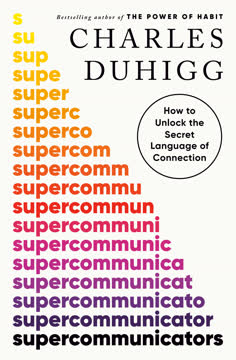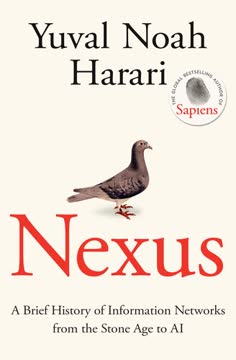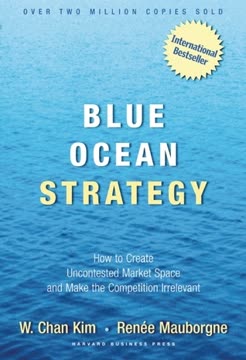Key Takeaways
1. Customer Consensus is the New Commercial Battleground
Much of the commoditization pressure suppliers face today isn’t the result of customers’ willingness to settle for “good enough,” it’s their failure to agree on anything more.
The 1 of 3 Problem. Suppliers often find themselves in a frustrating scenario where they are one of three considered, yet forced to compete solely on price, eroding margins and hindering growth. This isn't due to a lack of perceived value, but rather the customer's internal struggle to achieve consensus on a premium solution.
The Rise of the 5.4. The average number of stakeholders involved in a B2B purchase has increased to 5.4, each with diverse perspectives, priorities, and levels of knowledge. This diversity, while potentially beneficial, often leads to dysfunction, indecision, and a reversion to the lowest common denominator.
Diversity Drives Dysfunction. As stakeholder diversity increases, so does the likelihood of internal conflict, disagreements, and an inability to collaborate effectively. This dysfunction stems from divergent mental models, where stakeholders struggle to find common ground and agree on a shared vision.
2. Mobilizers: The Key to Unlocking Consensus
To win today, you need a Challenger inside the customer organization.
Beyond Advocates. Traditional "coaches" or "champions" are no longer sufficient in today's complex buying environment. Suppliers need to identify and equip a special breed of customer stakeholder: Mobilizers.
Mobilizer Defined. Mobilizers are individuals focused on marshaling internal resources and buy-in, compelling their colleagues to think and act beyond the status quo, irrespective of supplier. They are change agents who can navigate internal politics and drive consensus.
Mobilizer Profiles. Mobilizers come in three distinct flavors:
- Go-Getters: Pragmatic project managers focused on results.
- Teachers: Visionary communicators who inspire others.
- Skeptics: Cautious analysts who demand proof and rigor.
3. Commercial Insight: The Catalyst for Change
In the end, what has long seemed to salespeople like a well-designed strategy to “stick it to suppliers” or beat them up on price is more often than not a function of a far less sinister but arguably infinitely more intractable problem: the inability of customer stakeholders themselves to achieve broad agreement on a common course of action in the first place.
Beyond Thought Leadership. Commercial Insight goes beyond simply providing information or expertise. It challenges customers' existing beliefs and assumptions, revealing previously unseen opportunities or risks.
The A-to-B Framework. Commercial Insight involves breaking down the customer's current mental model (A) and building up a new, more compelling vision (B). This process creates cognitive dissonance and motivates them to change.
Commercial Insight Defined. It's insight that meets the “frame-breaking” bar, but simultaneously leads the customer back to that particular supplier as the only one able to help them take action on that insight.
4. Unteaching: The Art of Reshaping Customer Beliefs
Insight, in other words, isn’t designed just to teach customers something new that they’ve never thought before, but to unteach them something that they already have.
Challenging the Status Quo. The most effective way to drive change is not to simply present new information, but to challenge customers' existing beliefs and assumptions. This involves "unteaching" them something they already think they know.
The Power of Contrast. Commercial Insight highlights the cost of inaction, demonstrating how customers' current behaviors are costing them time, money, or opportunities. This creates a sense of urgency and motivates them to seek a better solution.
Building and Breaking Mental Models. Mental models are the underlying beliefs and assumptions that drive customer behavior. To change behavior, suppliers must first understand and then challenge these mental models, replacing them with a new, more compelling vision.
5. Tailoring: From Individual Resonance to Group Convergence
If suppliers don’t create convergence, their customers will.
Two Types of Tailoring. In the consensus-based sale, tailoring takes on two distinct forms:
- Individual Tailoring: Connecting with Mobilizers on a personal level, understanding their motivations and priorities.
- Group Tailoring: Aligning diverse stakeholders around a shared vision, creating a common understanding of the problem and the solution.
The Limits of Individual Resonance. While individual tailoring is essential for winning over Mobilizers, it is insufficient for driving high-quality deals. Suppliers must also find ways to connect those Mobilizers to the rest of the buying group.
Building a Collective Yes. The goal is to create a "Collective Yes," where all stakeholders are aligned on a common vision and committed to a shared course of action. This requires a shift from tailoring to win individual buy-in to tailoring to win organizational consensus.
6. Collective Learning: The Path to Shared Understanding
Unlike customer diversity, which is largely out of suppliers’ control, customer dysfunction is something they can do something about.
Beyond Individual Buy-In. The key to unlocking consensus is Collective Learning, where stakeholders explore, debate, and build on each other's perspectives, finding points of unrecognized agreement and arriving at a shared decision.
Reducing Dysfunction. Collective Learning reduces group dysfunction by fostering a common language, encouraging mutual understanding, clarifying group objectives, and overcoming individual biases. This creates a more functional buying group capable of making informed decisions.
The Power of Norming. Collective Learning facilitates "norming," where stakeholders learn from one another and establish collective expectations. This process leads to a shared vision and a commitment to a common course of action.
7. Taking Control: Guiding the Purchase Journey
If a purchase decision is going to stall, more likely than not it’s going to stall far earlier than most suppliers would anticipate, particularly if they’re focused only on watching for signs of customer disagreement around the value of their offering.
Beyond Selling, Facilitating. In a 5.4 world, suppliers must shift from simply presenting their solutions to actively facilitating customer learning and consensus-building. This involves understanding stakeholder power structures, managing productive debate, and guiding the group towards a shared vision.
Commercial Coaching. Suppliers must coach Mobilizers on how to navigate the internal landscape, address stakeholder concerns, and build support for the proposed solution. This involves providing them with the tools, resources, and guidance they need to succeed.
The Importance of Bounding. While prompting stakeholders to share their concerns is essential, it's equally important to bound the conversation, focusing on specific challenges and objectives. This prevents the group from becoming overwhelmed and reverting to the lowest common denominator.
8. Demand Mobilization: Shifting from Lead Generation to Insight-Driven Engagement
If we don’t understand how these groups of people work together—if we sell only at the individual level and not simultaneously at the collective level—there’s a good chance we’ll miss what has become the most important dynamic in B2B selling today: finding a way to connect the diverse individuals that comprise a buying group around a higher-level vision than where they’re most likely to land on their own.
Beyond Lead Generation. Traditional demand generation efforts often focus on generating leads that are "ready to buy," neglecting the importance of shaping demand and creating high-quality leads. This approach can lead to commoditization and smaller deals.
Mobilizing Demand. A new approach is needed that focuses on mobilizing demand by engaging Mobilizers early, challenging their mental models, and equipping them to drive consensus within their organizations. This involves creating content paths that confront and connect stakeholders.
Rethinking Lead Scoring. Lead-scoring criteria should be adjusted to reflect confrontation and connection, rewarding leads that have been "disrupted" by content and that have connected buying group stakeholders to one another. This shifts the focus from purchase readiness to mental model disruption and stakeholder alignment.
9. Marketing Talent: Cultivating the Skills for Insight-Driven Success
Commercial Insight isn’t an individual sales technique nearly as much as organizational commercial strategy.
Beyond Digital Skills. While digital skills are important, marketing teams also need to cultivate skills related to Commercial Insight creation, such as customer understanding, investigative abilities, and business acumen.
The Customer Native. The best Commercial Insight marketers possess a deep understanding of their customers, their motivations, their decisions, how they speak, and what they're thinking. This allows them to anticipate customer needs and challenge their existing beliefs.
Cocreative Teams. Building and deploying Commercial Insight is a team sport that requires collaboration between marketing, sales, product, and other functions. These teams must foster an environment where sharing and building on one another's ideas is encouraged.
10. Managing Blockers: Neutralizing Resistance and Fostering Agreement
You’ve got to have more than someone to talk to. You need someone willing to own the vision and make things happen.
The Blocker Challenge. Blockers are customer stakeholders who actively resist change and try to prevent deals from closing. They can derail consensus-building efforts and undermine even the most promising opportunities.
Strategies for Managing Blockers. Suppliers must proactively identify and manage Blockers, using a range of strategies:
- Social Pressure: Leveraging influencers and Collective Learning to encourage Blockers to reconsider their position.
- Tailored Dialogue: Communicating directly with Blockers, addressing their concerns and highlighting the benefits of the proposed solution.
- Targeted Concessions: Altering the deal to address specific Blocker concerns without compromising the overall value proposition.
- Escalation: Involving senior leaders to overrule Blocker influence (a last resort).
The Importance of Proactivity. Ignoring Blockers is not an option. Suppliers must actively engage and manage them to prevent them from derailing deals and undermining consensus.
Last updated:
FAQ
What's The Challenger Customer about?
- Focus on Buying Dynamics: The Challenger Customer delves into the complexities of modern B2B buying processes, highlighting the challenges in helping customers buy effectively.
- Role of Mobilizers: It introduces "Mobilizers," key stakeholders who drive change and consensus within customer organizations.
- Challenging Mental Models: The book emphasizes the need for suppliers to challenge existing customer mental models to facilitate change.
Why should I read The Challenger Customer?
- Insightful Research: The book is grounded in extensive research on customer behavior and buying processes, offering valuable insights for sales and marketing professionals.
- Practical Strategies: It provides actionable strategies for engaging with customers, especially in complex buying groups.
- Relevance to Modern Sales: Understanding the dynamics outlined is crucial for achieving sales success in increasingly complex B2B environments.
What are the key takeaways of The Challenger Customer?
- Understanding Customer Consensus: Emphasizes the importance of understanding the consensus-building process within customer organizations.
- Mobilizers as Key Players: Identifying and engaging Mobilizers is critical for driving change and influencing peers.
- Commercial Insight: Suppliers must provide insights that challenge customers' beliefs and encourage them to reconsider their practices.
What is a "Mobilizer" in The Challenger Customer?
- Definition of Mobilizer: A Mobilizer is a stakeholder open to change who can influence others to consider new solutions.
- Role in Consensus: Mobilizers are essential for building consensus among diverse stakeholders.
- Types of Mobilizers: The book identifies Go-Getters, Teachers, and Skeptics as types of Mobilizers, each with unique strengths.
How does The Challenger Customer define "Commercial Insight"?
- Teaching and Unteaching: Commercial Insight involves teaching customers something new while unteaching flawed current practices.
- Driving Change: It creates a compelling reason for customers to change by highlighting the costs of inaction.
- Supplier-Centric Approach: The insight should lead back to the supplier's unique capabilities, showing their value.
What is the "1 of 3 Problem" in The Challenger Customer?
- Definition of the Problem: Refers to a scenario where a supplier is one of three competitors, often leading to price-based competition.
- Impact on Sales: Highlights the challenge of differentiating when customers see all options as similar.
- Need for Mobilizers: Engaging Mobilizers can help shift the conversation away from price.
How can suppliers effectively engage Mobilizers according to The Challenger Customer?
- Teach Where They Learn: Understand where Mobilizers seek information and tailor insights to those channels.
- Tailor Engagement: Customize efforts based on the type of Mobilizer, addressing specific concerns and motivations.
- Equip for Consensus: Provide tools and insights to help Mobilizers build consensus among peers.
What is the Spark-Introduce-Confront method in The Challenger Customer?
- Three-Step Content Path: A structured approach to creating content that engages customers through sparking interest, introducing insights, and confronting beliefs.
- Engagement Strategy: Guides Mobilizers through a learning journey that challenges mental models.
- Focus on Customer Needs: Emphasizes addressing customer pain points with insights that resonate with their challenges.
What role does Collective Learning play in the buying process as described in The Challenger Customer?
- Overcoming Group Dysfunction: Helps diverse stakeholders engage in meaningful discussions about challenges and opportunities.
- Building Consensus: Facilitates reaching a collective agreement on the need for change.
- Enhancing Deal Quality: Increases the likelihood of closing high-quality deals by aligning perspectives.
How can I apply the concepts from The Challenger Customer in my sales strategy?
- Identify Mobilizers: Engage potential Mobilizers early to understand their perspectives and challenges.
- Develop Commercial Insights: Create insights that challenge mental models and resonate with customer needs.
- Facilitate Collective Learning: Organize workshops to encourage stakeholder alignment and consensus.
What are some best practices for engaging Mobilizers according to The Challenger Customer?
- Tailor Your Approach: Customize strategies based on the type of Mobilizer (Go-Getter, Teacher, or Skeptic).
- Provide Valuable Insights: Share relevant insights to establish credibility and encourage advocacy.
- Support Their Efforts: Equip Mobilizers with tools to communicate effectively with colleagues.
What are some practical examples of Commercial Insight from The Challenger Customer?
- DENTSPLY Case Study: Reframed the conversation around dental instruments by highlighting hidden costs, leading to increased sales.
- Xerox Case Study: Shifted messaging to focus on educational outcomes, significantly increasing sales.
- Framework Application: Both examples show the importance of understanding mental models and crafting insights that challenge beliefs.
Review Summary
The Challenger Customer receives mostly positive reviews, with readers praising its insights into B2B sales and complex buying processes. Many find it useful for understanding stakeholder dynamics and consensus-building in large organizations. The book is commended for its practical strategies and data-driven approach. Some readers note that the content can be repetitive and dense at times. Overall, it's considered a valuable resource for sales professionals and marketers, particularly those dealing with multiple decision-makers in corporate settings.
Similar Books










Download PDF
Download EPUB
.epub digital book format is ideal for reading ebooks on phones, tablets, and e-readers.




